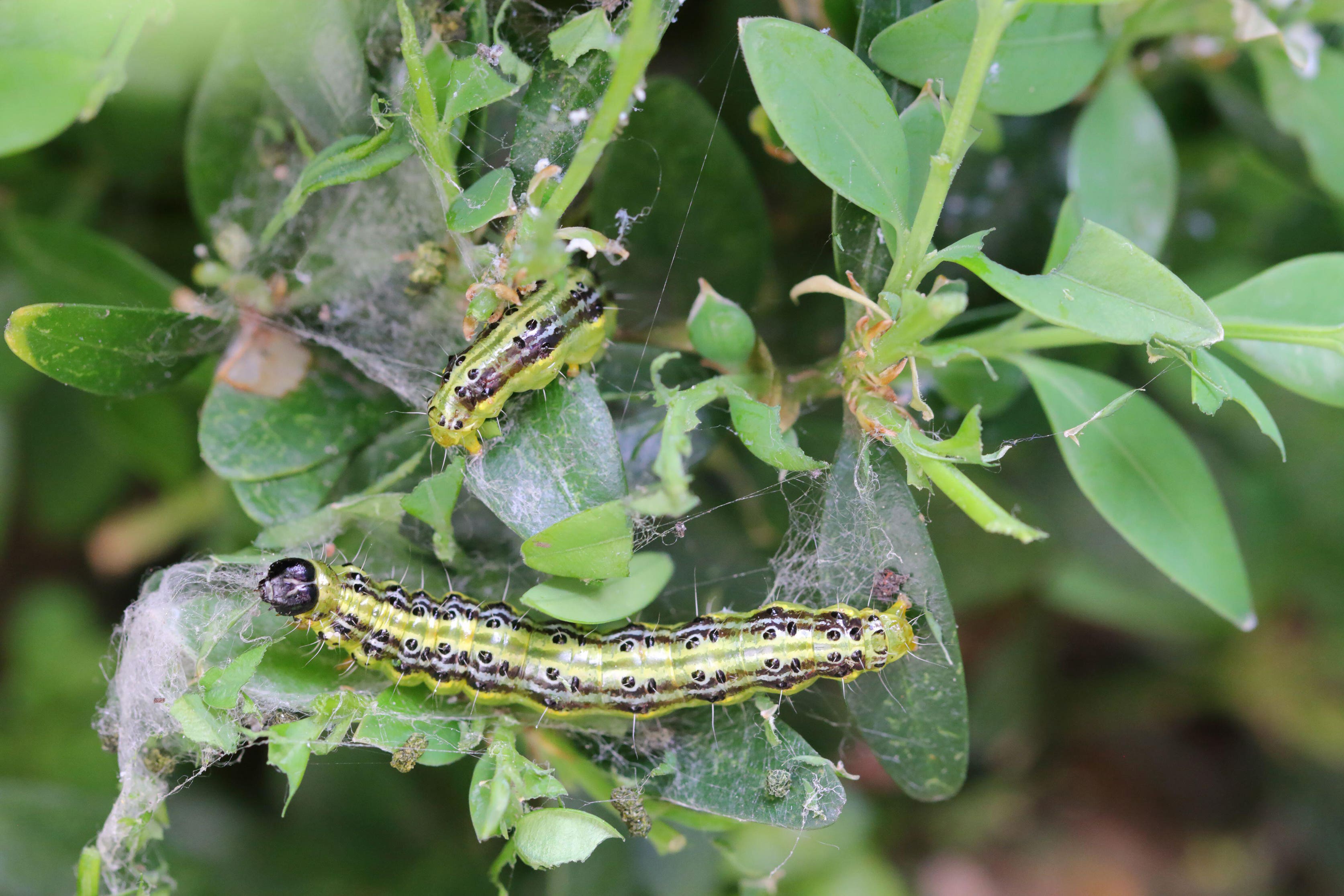The pests you really don’t want invading your garden and how to deter them
Toxic caterpillars, vine weevil, slugs and snails may all be lurking – but what can we do about them?

As responsible gardeners with positive attitudes to insects and biodiversity, it’s a bitter pill to swallow when vine weevil, carrot fly and aphids take hold – let alone the processionary moth caterpillar which can cause rashes and breathing difficulties.
Dr Andrew Salisbury, RHS principal entomologist, says: “We don’t want to automatically label things as pests, because as soon as you do that people think they have to control it.
“But sometimes some of the creatures in our garden do damage our plants beyond the level of damage we can accept.”
Oak processionary moth
The Forestry Commission has warned of a toxic caterpillar which can cause rashes and strip native oak trees of their leaves.
Salisbury explains: “The oak processionary [moth] caterpillars can cause rashes and breathing difficulties and it’s now widespread in London and some of the surrounding areas.”
They are most active in June, July and August, when the caterpillars form processions up the tree trunk and create a nest of white silk. Don’t touch the hairy caterpillars as they can cause reactions.
Solution: “If you have it on an oak in your garden, you need to seek professional advice,” Salisbury warns.
An information leaflet is available through forestresearch.gov.uk.
Vine weevil
If your patio pot plant suddenly wilts and collapses, and you examine it to find there’s little root left, it’s likely to be vine weevil larvae, which are laid by the adult beetle and feed off the underground roots in autumn through to spring – often until there’s nothing left. Their favourites include heucheras, cyclamen, sedum and young yew – and it is generally plants in pots which suffer most damage.
“Vine weevil is there in people’s gardens in the open ground, but usually there are enough natural enemies to keep it in check,” he says. The adults feed on thick-leaved evergreen shrubs like rhododendron, eating the outside of leaves.
Solution: By June the damage has been done and there’s little you can do. However, nematodes (tiny microscopic worms that attack, invade and kill target species) offer biological control to eliminate the grubs. Apply a nematode solution to your pots in late summer/early autumn, which should solve the problem, he suggests.
Aphids
There are more than 500 species of aphid in the UK, including greenfly and blackfly, and their population expands rapidly. You’ll see them on the stems of many plants up to the flowers, sometimes resulting in the plant’s loss of vigour.
“They breed faster than their natural enemies can catch up with them,” Salisbury explains. “There’s an endless list of enemies – many different species of wasps, beetles and ladybirds, lacewing and hoverfly larvae all eat them, as well as bluetits.
“They tend to breed and get into high numbers in early spring. If you get through spring, by the time you get to mid-June and July, then those natural enemies really do their job and can wipe out aphids.”
Solution: As soon as you see them, put on a pair of gardening gloves and remove them with your fingers, running them up the stem.
Carrot root fly
It looks like a housefly but it’s the larvae – yellow-white maggots – which do the damage, burrowing into the carrot and leaving it inedible. It also feeds on related vegetables including parsnips, celery and celeriac.
There are two generations a year (spring and autumn) and the carrot fly is attracted to the smell of the leaves of the plant.
Solution: “Grow your carrots under insect-proof mesh,” Salisbury advises. Choose varieties which are less susceptible to carrot fly, like ‘Fly Away’, ‘Maestro’, ‘Resistafly’ and ‘Sytan’. You could also companion plant pungent crops such as onion and garlic between rows, to put them off the scent. And grow them in raised beds, as it is said that the fly can’t fly very high.
Slugs and snails
As any gardener will know, slugs and snails can chomp through leaves and flowers at an alarming rate, often after rain or at night when it’s cooler.
“They are our number one inquiry in the entomology section of the RHS, but not all slugs and snails like to eat fresh plant material. There are more than 30 species in the UK and many of those feed on dead material,” he explains.
“But if you’ve got hostas in a nice damp patch in the garden, they will damage them. They also damage potatoes.”
Solution: “Accept there may be some damage and have some tolerance of a few leaf holes. If they are being very badly damaged in parts of the garden, consider planting plants which are less likely to be eaten by slugs and snails.
“There are barriers out there to deter them, but we have found they are generally not as good as they could be,” he says.
You could also create a haven for wildlife, such as a pond, to attract their natural enemies such as frogs and birds. Handpicking them off in the evening, or after rainfall, is among the best solutions.
Box tree moth
The black-headed, greenish-yellow caterpillars of these moths can completely defoliate your box, working within white webbing which is visible on the plant. They are most active between April and October. The adult moth has often white wings with a brown border, although the wings can be completely brown. Plants will show patches of dieback.
“It’s particularly difficult to deal with, it’s relatively new to the country, it’s spreading and it can strip box plants, with two generations a year,” Salisbury warns.
Solution: Check plants frequently in spring onwards before the damage is done, picking off any caterpillars you see. Alternatively, choose alternative hedging and topiary plants such as yew.
Bookmark popover
Removed from bookmarks